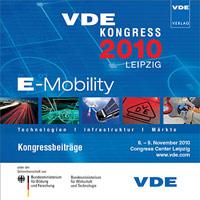Micro Energy Harvesting: Research after the first decade
Konferenz: VDE-Kongress 2010 - E-Mobility: Technologien - Infrastruktur - Märkte
08.11.2010 - 09.11.2010 in Leipzig, Deutschland
Tagungsband: VDE-Kongress 2010
Seiten: 6Sprache: EnglischTyp: PDF
Persönliche VDE-Mitglieder erhalten auf diesen Artikel 10% Rabatt
Autoren:
Woias, Peter; Eichhorn, Christoph; Wischke, Martin; Goldschmidtböing, Frank (Albert-Ludwigs-University of Freiburg, Dept. of Microsystems Engineering, Laboratory for Design of Microsystems, Freiburg, Germany)
Inhalt:
From today’s perspective, micro energy harvesting has seen a tremendous start in the last decade, concerning basic research, fabrication technologies and the outcome of first products and applications. The main driver of this success is the on-going application of distributed and embedded microsystems in almost every area of our daily living. More and more wireless sensors are used in logistics, environmental and building technologies or automotive applications, with their need of a reliable power supply without batteries or power cords. Also, the "internet of things" is considered as the main future - and ubiquitous - network for signal processing, data transmission and control. Finally, our ever growing infrastructure networks claims for widely distributed sensor and actuator networks, e.g. for the structural integrity monitoring of bridges and tunnels or for a reliable control of our waste water management system. As a consequence, the phase of early "high-flying" research in energy harvesting is settling down towards a more technically and application-oriented approach. Also, it is more and more recognized by potential customers that micro energy harvesting cannot be considered as an isolated technology whose only distinction is the replacement of batteries or wire cords in a modular fashion. In contrary, the embedded system together with its energy harvesting capabilities has to be re-designed in a "full system approach" as an energy-autonomous embedded system that embraces energy conversion, energy storage, energy management and the system hardware and functionality. Finally, it turns out that conventional and familiar technologies, e.g. for energy storage or power management, do not show an optimal performance when used in an energy-autonomous embedded system. This article gives an outlook for the actual and future research in micro energy harvesting, having these directives in mind.


